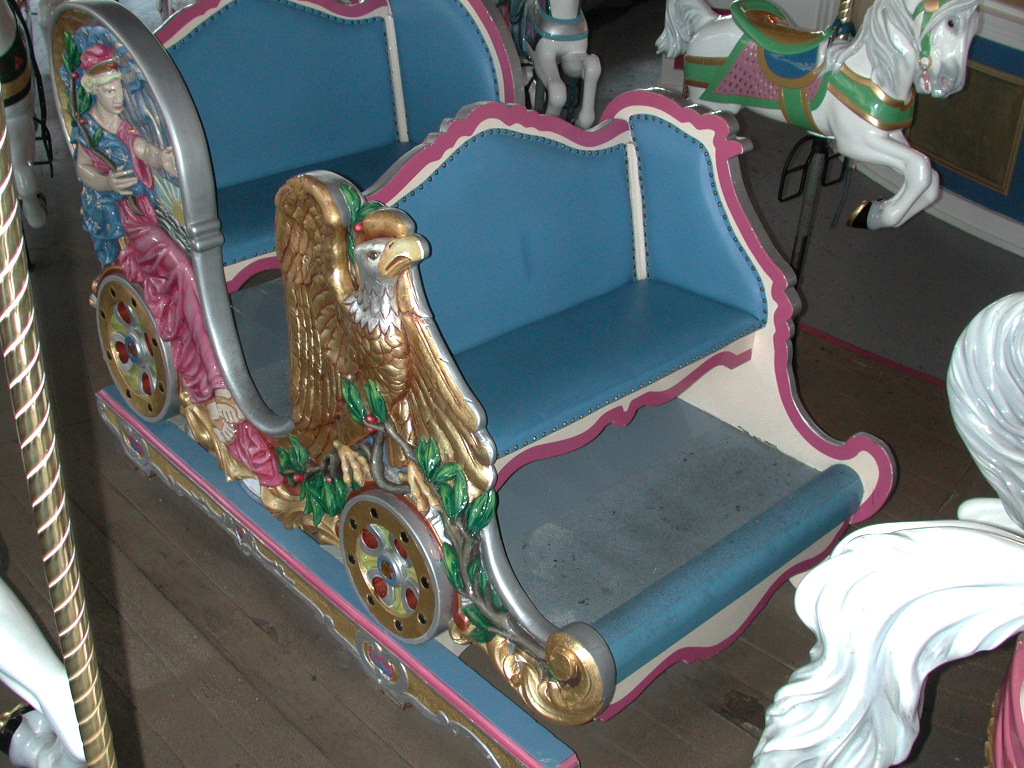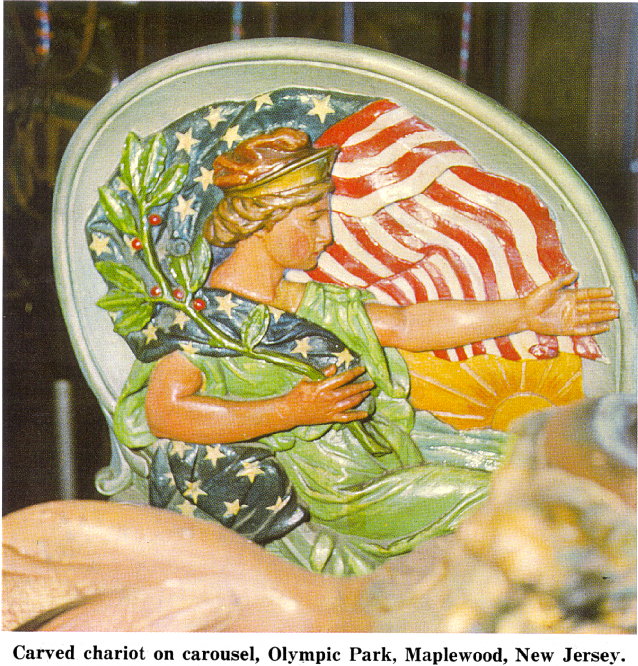Disney snubs history and art by altering Magic Kingdom carousel
Exclusive to MeierMovies, May 25, 2017
One of the most beloved attractions at Walt Disney World will soon celebrate a milestone. Prince Charming Regal Carrousel in the Magic Kingdom (formerly Cinderella’s Golden Carrousel) was built in 1917 and 1918 as “The Liberty” by the Philadelphia Toboggan Company and will mark the 100th anniversary of its original opening (in Detroit’s Palace Garden Park) next year. But instead of embracing the ride’s history, Disney has recently removed one of its original hand-carved chariots. Removing that chariot is the wrong decision. And I should know, because I’m the guy who put it there.
The carousel is the only Walt Disney World attraction that Walt saw, as he died in 1966, five years before the resort’s groundbreaking. By virtue of it being the nation’s biggest carousel (and arguably the most famous) when it resided at Olympic Park in New Jersey, Walt would have seen photos and might have even visited it. So when his Imagineers bought the merry-go-round and moved it to Florida, it carried with it a special nostalgia.
Originally featuring 80 horses and four chariots, the ride was altered for its Disney World debut in 1971. Sadly, the chariots were removed, and wooden horses from other historic carousels were added (with some fiberglass reproductions) to bring the number to 90 (plus a few extras to allow for regular refurbishments). In addition, “standers” were turned into “jumpers” by altering the legs. Fast forward to 1996 when I, a wide-eyed, young Disney cast member, devoted myself to the upkeep and history of the attraction. Inspired by Isle Voght, a talented painter who served as the carousel’s champion, I hunted down the original chariots, feeling it was a worthy goal to restore the carousel’s history while allowing elderly guests and those with disabilities a place to sit.
It turns out that the two original Roman-style outer chariots had been added to Disneyland Paris’s carousel a few years earlier. But one of the original inner, sleigh-style chariots was sitting in the Disney Imagineering warehouses in Glendale, California. It was in bad shape, with one of its seats busted out and quite a bit of other damage, but it was not only salvageable but still a masterpiece of wooden carousel art. So with the help of Voght and others with a passion for history and art (including my friend Chester Maple and Brian Morgan of the National Carousel Association), I fought to restore not just the chariot but the entire ride in 1999. I even took my fight to the office of Michael Eisner. That fight paid off.

The carousel in 1918, in Detroit. Note the outer, Roman-style chariot on the left and the inner, sleigh-style chariot (the one added back to the carousel in 1999) on the right.
The inner chariot has ridden the ride ever since, delighting millions. But now it’s been removed, apparently because Disney prefers a new bench-type structure that is fully compliant with the Americans with Disabilities Act (ADA) and also because the chariot apparently is in need of another restoration. While ADA compliancy is a worthy goal, the majority of Disney attractions are not fully compliant, and many never will be for logistical reasons. But even if Disney is adamant about making the carousel compliant, it makes no sense that the historic chariot would be removed. Just as the original 1918 version of the carousel featured four chariots, the modern ride can certainly accommodate at least two: an ADA one and the original, historic piece, with the two sitting on opposite sides of the ride. And perhaps, for the ADA one, they could draw inspiration from the original outer, Roman chariots. Or, better still, they could move those original chariots from Disneyland Paris back to the Disney World carousel where they belong, slightly altered to allow wheelchairs to sit in or near them. And there are still other ways of honoring the carousel’s history, such as restoring two original wooden horses that were removed years ago and now sit sadly in California warehouses, gathering dust.
Alas, all of this takes vision and money. And while Disney is loaded with the latter, it takes artistic appreciation and an understanding of history to treat Prince Charming Regal Carrousel the way it deserves to be treated. If, like me, you value that history, stand with me and demand that Disney do the right thing. Do it for master carver John Zalar and the other talented artists who created the carousel 100 years ago. Do it for the guests who demand the highest quality from Disney. Do it for Walt.
“Some people do things with integrity,” Disney legend John Hench told me when I was fighting for the continued upkeep of the carousel in 2002, two years before he died. Let’s see how much integrity Disney can muster now.
For more information, see my Complete Inventory and History of the Disney World Carrousel (PTC #46). (This history and inventory was done in 2002, so it’s possible some of the information, including horse numbers, could be outdated.)
© 2017 MeierMovies, LLC

